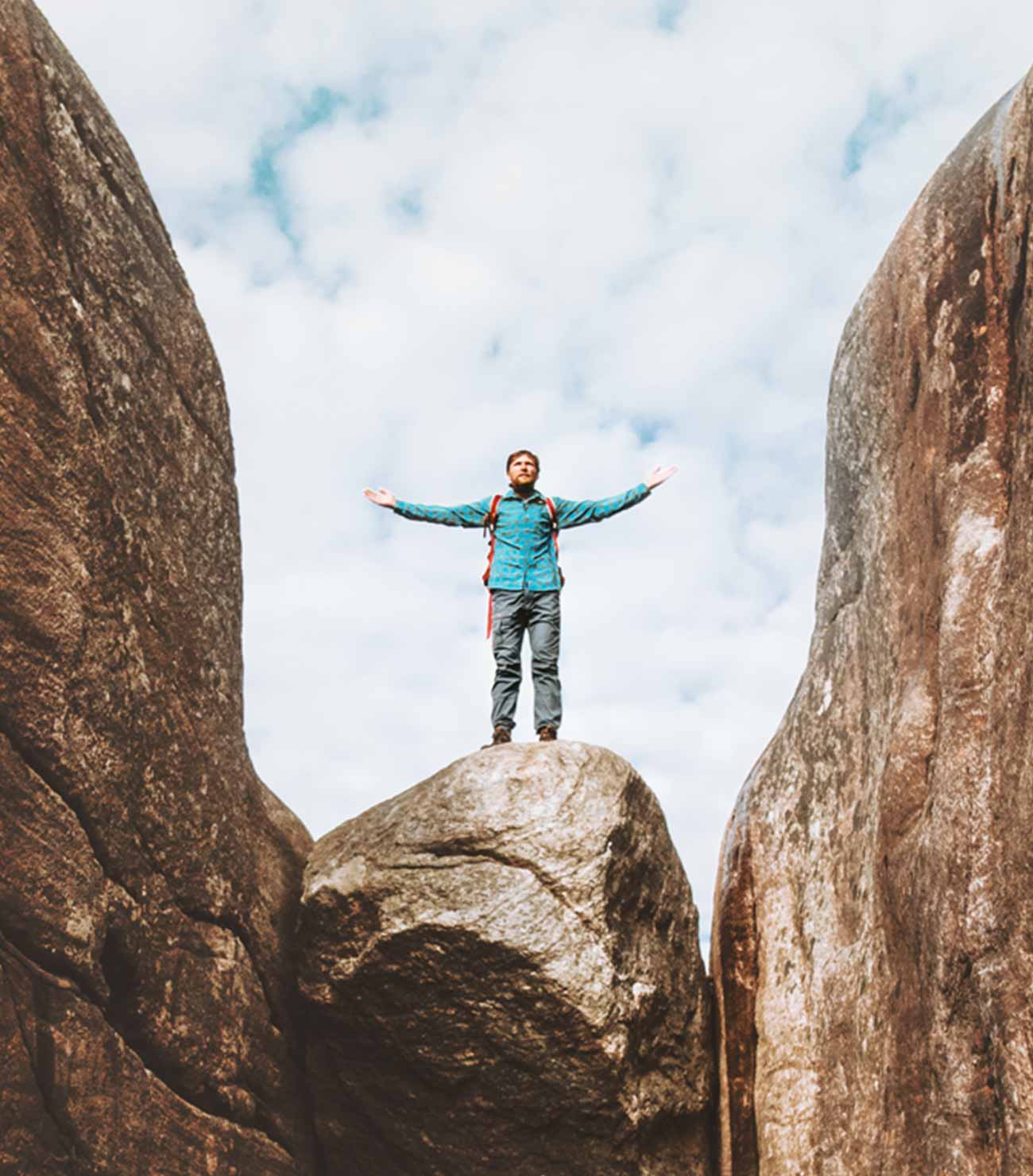Touring the Grand Canyon-Legendary Place in All Details
One of the most important tourist spots of the USA with its unique appearance, the Grand Canyon is a huge canyon that really deserves the word “Grand” in English. Also, a detail that catches your attention when you first come to the Grand Canyon is that you will see many caravans. Caravan use is very common in the USA, and American domestic tourists prefer to visit national parks such as the Grand Canyon by caravan. However, even if there is no caravan, it is possible to enjoy the Grand Canyon by private vehicle, as there are many hotels that appeal to different budgets. With its unique geological colors and erosive forms, the Grand Canyon is 466 km long (277 river miles), 29 km (18 miles) wide and 1.6 km (1 mile) deep. The oldest of the rocks in the inner passages below the canyon date back to 1.84 billion years ago. There are more than 1500 plant, 355 bird, 89 mammal, 47 reptile and 9 amphibian species in the park. In addition, 17 fish species live in the Colorado River and its tributaries. The Colorado River forms a barrier that divides the Grand Canyon in two. The average distance across the canyon is only 16 km (10 miles), while the distance between the villages of South Rim and North Rim is 346 km (215 miles) and takes 5 hours by car. As you can see, this is a huge place. If you want to visit all of them, you need to take time.
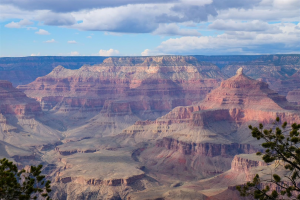
The Grand Canyon is a travel destination visited by an average of 5 million tourists each year. The Grand Canyon consists of two parts, the Northern Rim and the Southern Rim. It is closed in winter as the North Edge is higher in altitude. However, the South Rim is open to tourists in all seasons.
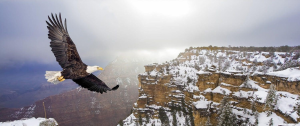
The Grand Canyon is not a dead valley, it is the home of many living things. As it is a natural national park, it is possible to see deer, mules, squirrels, snakes, scorpions and spiders here.
View Spots
There are 14 different viewing points in the Grand Canyon. These spots were chosen by identifying the best places to see the Grand Canyon from different angles. Therefore, when you start the Grand Canyon tour, you can visit these points one by one from 1 to 14 and watch and photograph the magnificent beauty of the Grand Canyon from different angles. The first viewing point is the tower above, which is called the “watchtower”. Then you can visit other points in turn.
Risks and Hazards in the Grand Canyon
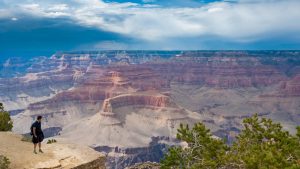
Besides its magnificent beauty, the Grand Canyon can be a dangerous place for careless and unwary tourists. So far, the number of tourists who have lost their lives in the Grand Canyon trip is around 800. The main causes of death are falling off a cliff, stings from snakes, spiders or scorpions, being attacked by wild animals, and thirst. As the Grand Canyon is a huge park, tourists entering the canyon for trekking may lose their way, become dehydrated and face the risk of death. Therefore, the biggest danger for travelers trekking to the Grand Canyon is thirst. In recent years, the number of tourists who fall while taking pictures or being photographed is quite high.
What are the best spots to watch the Sunset and Sunrise in the Grand Canyon?
We are sure that it will be very impressive to watch the sunset and sunrise from every point of the canyon, accompanied by the reflection of the sun hitting the canyon.
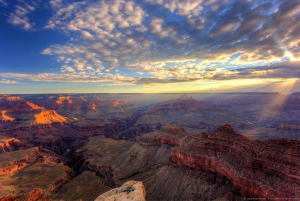
Hopi Point is known as one of the best places for sunsets. Therefore, at this point in the sunset, the crowd of people and buses becomes more dense. Yaki and Yavapai Points, which can only be reached by service, may be preferred because they will be less crowded. It will be a pleasure to watch the sights of Lipan, Navajo and Deset Landscape, accompanied by the magnificent view of the canyon and the stretching of the river below.
Things to do on the South Rim and North Rim
Activities may vary according to your personal taste, time and weather conditions. For nature lovers, even visiting the Grand Canyon will be a pleasure in itself. Sunrise and sunset tours, camping, hiking, rafting, cycling, bus tours, helicopter, balloon rides, etc. There are paid and free activities.
Grand Canyon South Rim
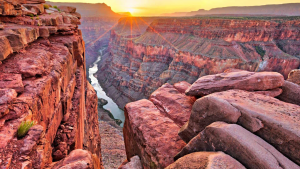
The first place to stop, of course, should be the Grand Canyon Visitor Center. You can find all the information about the Grand Canyon. You can watch promotional films, rent a bike or join guided bike tours here. There are bicycle services between 1-April and 31-October, other times are arranged according to the weather conditions. If you came by car, you can leave your car in the car parks here and go to the scenic areas in the canyon with free buses.
There are 3 separate free bus service lines in the park. Hermits Rest Route, Kaibab Trail Route, and Village Route.
Grand Canyon Village: The hub of transportation and activities for the South Rim. Historic Distric (buildings from 1900), bank, post office, market etc. Market Plaza, where the tourist information center is located, is in this area.
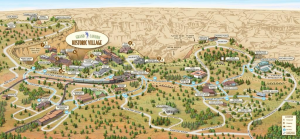
The Scenic Hermits Road (Formerly West Rim Drive)

It is the line of choice, especially for those with limited time. Between March 1 and November 30, you can only visit the picturesque areas here by free buses, on foot or by bicycle. As buses do not run between December and February on these dates, private vehicles are allowed. There are 9 different points of view along this line. You can get off at any time, take the next bus to another point of view, or walk around enjoying the view. The last stop is Hermits Rest and there is a food and drink, toilet and gift shop. The last return bus leaves half an hour after sunset and does not stop at any stop on the way back. The distance is 11 km (7 miles) and 75 minutes without getting off the bus.
The Scenic Desert View Drive: You can travel by car or join paid bus tours on the 42 km (25 miles) long road with picturesque views surrounding the eastern side of the Grand Canyon Village. There is also a historic stone watchtower called Deset Viewpoint in the superficial area. From the top of the tower, which is 21.5 meters high, there is a panoramic view of the open air up to 160 km. The Tusian ruins and museum, where you can learn about the life of the locals of Pueblo, are in this area and you can visit it for free. There are 5 different walking paths in the canyon.
Grand Canyon North Rim
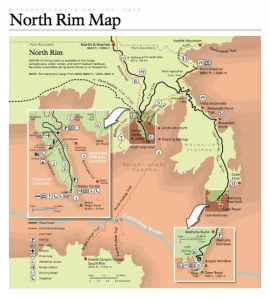
All accommodation, meals and beverages and activities in this section are open between May 15 and October 15. We recommend that you start your journey with information from The North Rim Visitor Center. Open from 8:00 to 18:00. You can choose one or more tracks of different difficulties and join the daily walks. There are also group trips with special permission. There are 13 footpaths and their duration is 20 minutes. Varies between 6 and 6 hours. Many had a chance to go without a guide. Some tracks have canyon views, and each track has different features. You can get information about the routes from the tourist center and find all the details in the brochures.
There are free tracker programs, enthusiasts can join. There are 1-hour or half-day rides with mules. 1 hour is $40, 1/2 day is $80. Registration can be made at the Grand Canyon Trail Rides desk located in the lobby of the Grand Canyon Lodge.
The North Rim Scenic Drive can be toured. You can go to Point Imperial and Copa Royal by car with a view. You can take breaks at the points you want to take pictures and watch the scenery.
There are train tours between the South Rim and the North Rim, their prices start at $65.
California Vulture
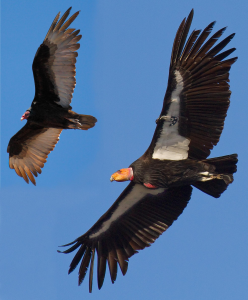
Until 2015, a total of 72 Vultures lived in the Grand Canyon. The Vultures in the Grand Canyon were the largest bird species on the North American continent. Their wingspan was about 3 meters. Unfortunately, the future of this bird is in jeopardy. Only one or two of the babies born each year survive. Their descendants did not survive for two reasons. The first is lead poisoning; If a mother and father feed their young with cuts from animals shot by hunters, unfortunately, generations are poisoned. Therefore, biologists closely monitor the parents of the offspring and often perform blood tests. The second reason is that a 6-month-old baby makes his first flight in the Canyon, and if he can’t fly, he unfortunately falls and dies.
Meteor Crater
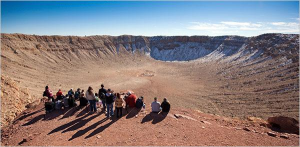
Meteor Crater If you are interested, you can see the huge crater created by the meteor hitting the Winslow region in the north of Arizona 50,000 years ago. A pit was formed about 168 meters deep, 1.6 km in diameter and 3.9 km in circumference.



